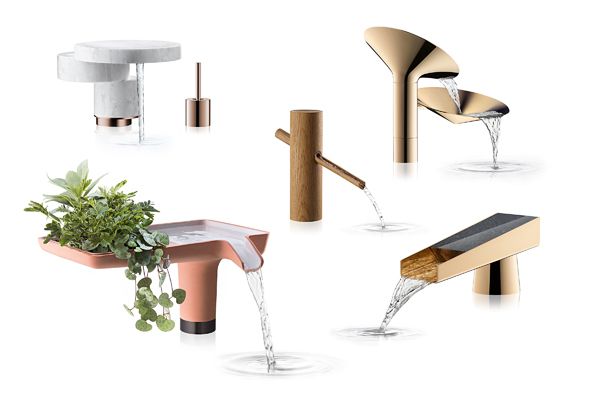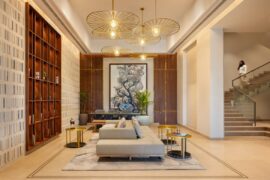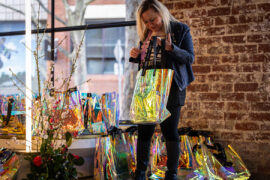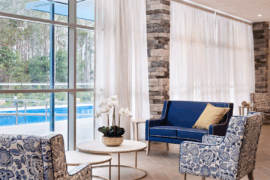Clifton Leung talks about brand DNA and designing experiences for Hong Kong retail and hospitality names.

Clifton Leung knows a thing or two about designing for different brands. The HK-Canadian designer is the Founder of Clifton Leung Design Workshop, and he has worked with brands ranging from telecommunications groups such as HKT to boutique hospitality company Madera Group and horse racing operator and institution The Hong Kong Jockey Club. In the process, he’s learnt a lot about creating designs that reflect what each individual brand is really about. Here, he explains why he likes themes, and the importance of creating experiences.
Why are themes important to you?
From the very beginning of each project, I like to think in themes, because it helps create a starting point. It’s important for hospitality projects, so people know where they’re going and what your space is all about. You can give people a stronger message; that way, they’ll know what the company you’re designing for is all about.
Everyone from Starbucks to fashion brands has a look that reflects their DNA. If you look at [modern fashion label] COS, their stores are very minimal, with great display. They feel very Scandinavian and it makes you want to go into their stores.
How do you incorporate branding to create unique yet on-brand experiences for the telecoms you work with?
With PCCW, when I presented my ideas, I said, ‘You guys have only two businesses: home and work.’ They hadn’t looked at it that way before, because they have so many different products, from home phones, smartphones and fax machines to Now TV and Now Broadband. Home can include everything from landlines to Now TV and Broadband. Whereas work is everything mobile. We designed the spaces around this separation. PCCW is very operations-driven, so the design reflects this: they wanted lots of counters.
They’re part of HKT, which has different brands. 1010 is more home-driven, for example. At their store on Wellington Street, we incorporated a lot of sofas. It was part of their of their brief that they want their customers to feel like they’re being served. It’s a premium brand. When they’re dealing with telecom services, people generally stand around waiting for at least half an hour, 45 mins. So for 1010, we decided their customers needed comfortable seats. Staff come and sit down next to you and help you.
We also did another themed shop in Mongkok, for One2Free [another HK telecom]. It’s spread over two levels, they have music areas, they have 3D TV areas, mobile areas. You can hang out in the shop, listening to music and downloading your favourite tunes. One2Free is more for Millennials. Its image is young and fun, that’s why we created a ceiling that lights up in all different colours. You can see it from the street.
You recently completed the lobby for Madera Hollywood. Please could you tell us about this project?
It’s a small space, but they wanted to create a presence that would attract people walking along Hollywood Road, and make them realise there’s a hotel here.
The owners collect all these signed Marilyn Monroe and Charlie Chaplin photographs, and I wanted to bring this theme into the lobby. They already had themed Monroe rooms, for example. The rooms are also very vibrant, using shocking blues and oranges. I wanted to bring these colours into the lobby. I also didn’t want to create some grand marble entrance that you don’t remember because it looks just like everything else.
What about spaghetti 360°, the chain of pasta restaurants you’ve designed spaces for?
The design is very industrial and simple. They’re kind of like fast food restaurants inside malls. The tables were inspired by Scrabble: the name Spaghetti is spelled out, so that, for example, when you’re in the mall in Shatin and you look down from the top floor, you can see various words, like ‘spaghetti’. The Scrabble design attracts people, it’s simple yet it turns a table into something fun.
How do you feel hospitality design – and retail design, for that matter – is changing?
People don’t just want food or drink or a coffee these days; they want something more. They want something more experiential, more fun. It’s a bit like going to a theme park. You experience their words, their characters, their world. It works, and it makes you want to go back there.
INDESIGN is on instagram
Follow @indesignlive
A searchable and comprehensive guide for specifying leading products and their suppliers
Keep up to date with the latest and greatest from our industry BFF's!

Welcomed to the Australian design scene in 2024, Kokuyo is set to redefine collaboration, bringing its unique blend of colour and function to individuals and corporations, designed to be used Any Way!

The undeniable thread connecting Herman Miller and Knoll’s design legacies across the decades now finds its profound physical embodiment at MillerKnoll’s new Design Yard Archives.

Gaggenau’s understated appliance fuses a carefully calibrated aesthetic of deliberate subtraction with an intuitive dynamism of culinary fluidity, unveiling a delightfully unrestricted spectrum of high-performing creativity.
At Salone del Mobile 2016 visitors from across the world spent a whirlwind week discovering the latest offerings from some of the most exciting names in the industry. We had the opportunity to find out what Liz Teh, the Head of Design for Haworth Asia Pacific, thought were the best design trends and exhibitions this year.

Axor challenges designers to reinvent the way we experience water with alternative materials and forms at Salone del Mobile 2016.
The internet never sleeps! Here's the stuff you might have missed

The Godrej Woods Clubhouse is the jewel in the crown of a residential development in Noida, India, offering every facility curated with style and finesse by Studio IAAD.

Explore the prizes up for grabs at Saturday Indesign this year when you register and check into 10+ showrooms on the day.

Inspired by an unthinkable design challenge on Sydney Harbour, Materialised’s ingenuity didn’t just fuse acoustic performance with transparent finesse – it forever reimagined commercial curtain textiles by making the impossible possible.